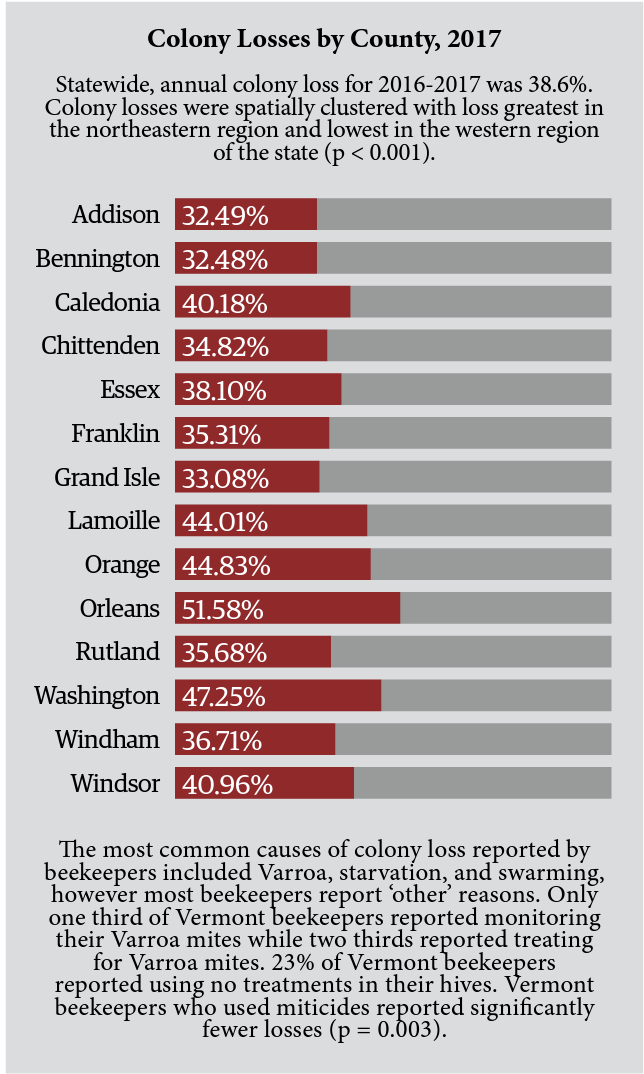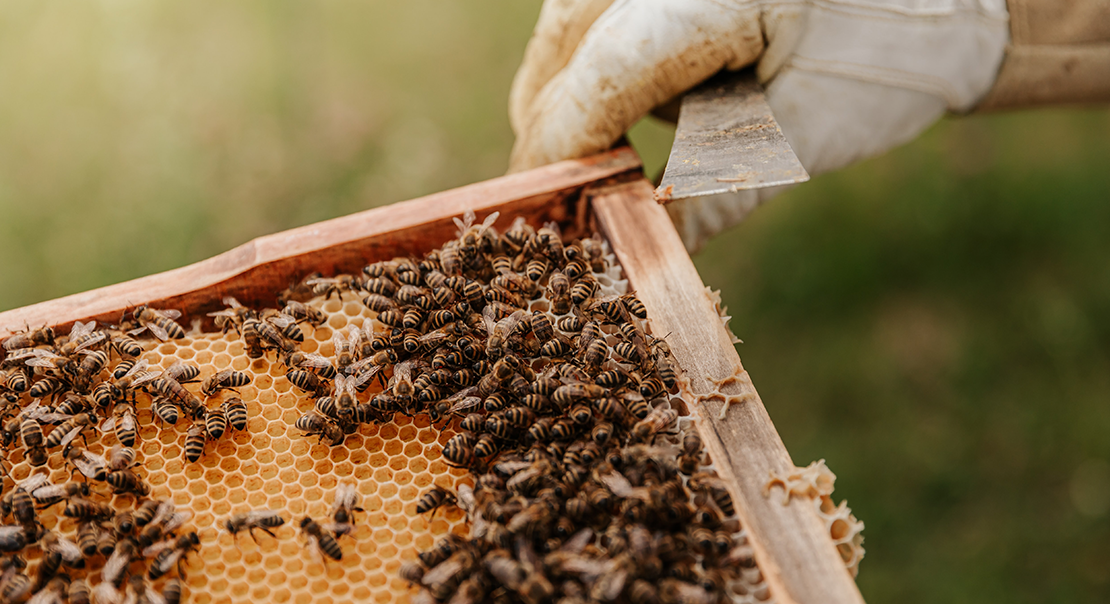

The pollination services of wild and managed bees are critical for the production of our food crops. However, managed and wild bees are in decline, due to a multitude of interacting stressors including pests and pathogens, habitat loss through land use change, and exposure to pesticides. Bee losses threaten biodiversity, food security, and the agricultural economy. Vermont has an active community of beekeepers that manage numerous county beekeeping clubs and provide honey and other value-added products to stores throughout the state. Vermont is also home to several world-famous beekeepers and queen breeders. However, for the past decade, Vermont beekeepers have lost one-third of their colonies each winter. To ensure adequate pollination of our food crops and the protection of Vermont’s honey and beekeeping industry, Vermont needs an integrated support system that mitigates current threats to wild and managed bees and provides education to consumers.
Pollinators, including bees, contribute more than $24 billion to the U.S. economy through their vital role in the production of fruits, nuts, and vegetables. Vermont has 14,553 hives producing an estimated 727,650 pounds of honey annually. These bees and beekeepers face significant challenges. Since 2006, Vermont beekeepers have lost an average of 33% of their honey bee colonies each winter and in 2018-2019, Vermont’s average annual colony losses ranked third-highest nationally. Key threats facing bees are pests and pathogens, land use change (e.g., development), and pesticide application. To combat high colony losses, beekeepers need bees that are healthy, pathogen-resistant/tolerant, and adapted to Vermont’s climate and long winters. However, thousands of colonies are imported to Vermont each year after participating in large pollination events where the risk of disease transmission is heightened.
The high value of honey makes it a target for economically motivated adulteration (EMA)—the intentional adulteration of food crops for economic advantage. Honey fraud worldwide has resulted in a downward pressure on pure honey prices due to an oversupply of product, with most notable price drops in the US market. Some states have created standards of identity for honey. Here in Vermont, no such standards currently exist, leaving Vermont beekeepers and consumers unprotected from adulterated “honey” products. Honey adulteration and its impact on the honey market is a critical issue for Vermont beekeepers and of importance to the regulating Vermont Agency of Agriculture, Food and Markets (VAAFM).

